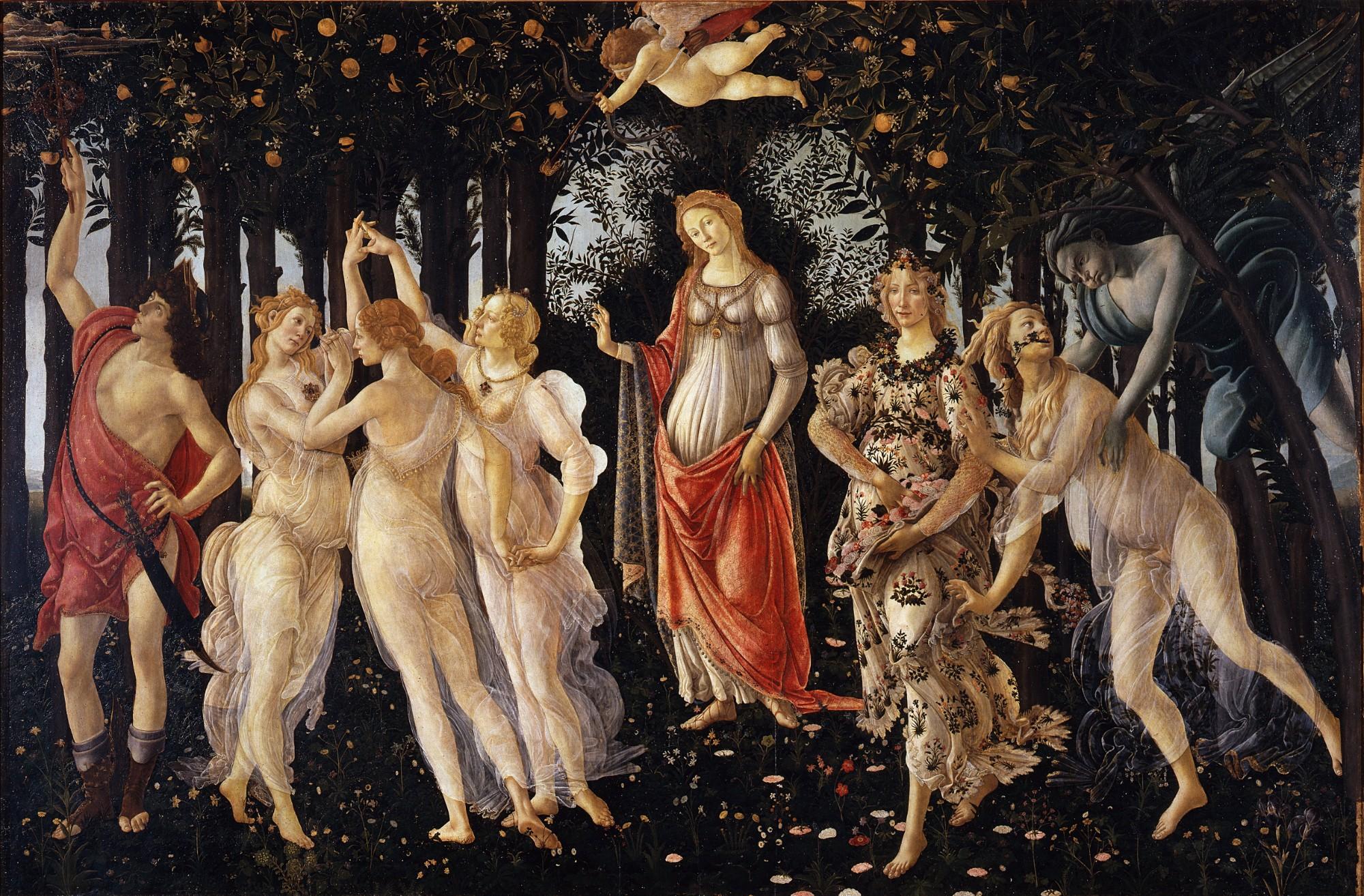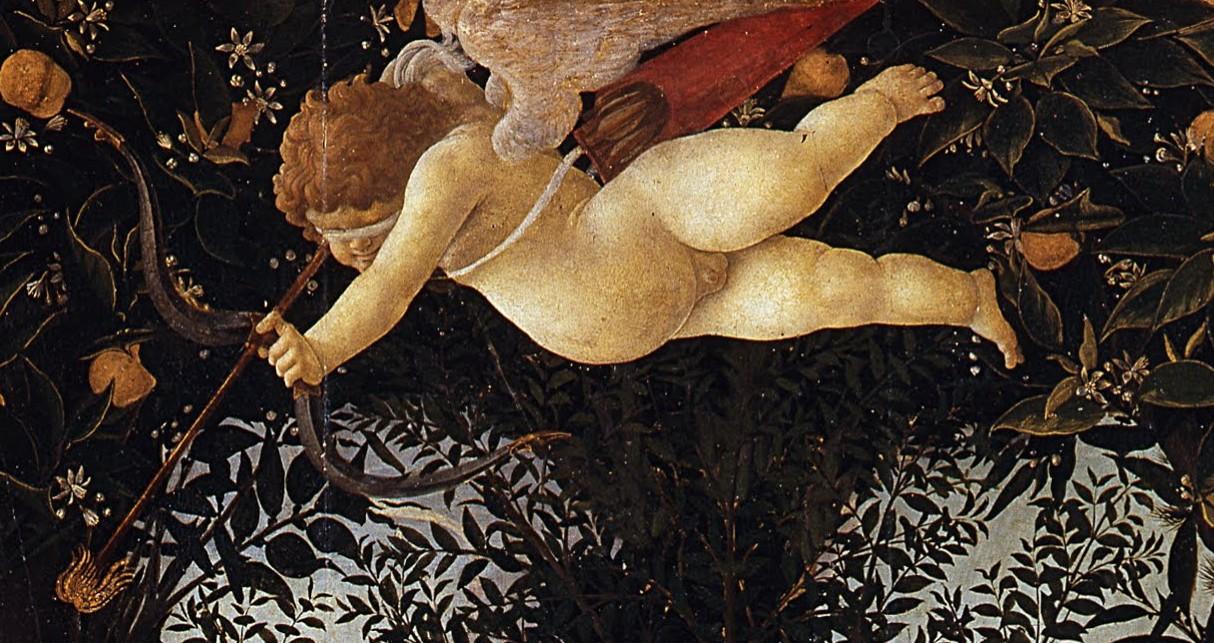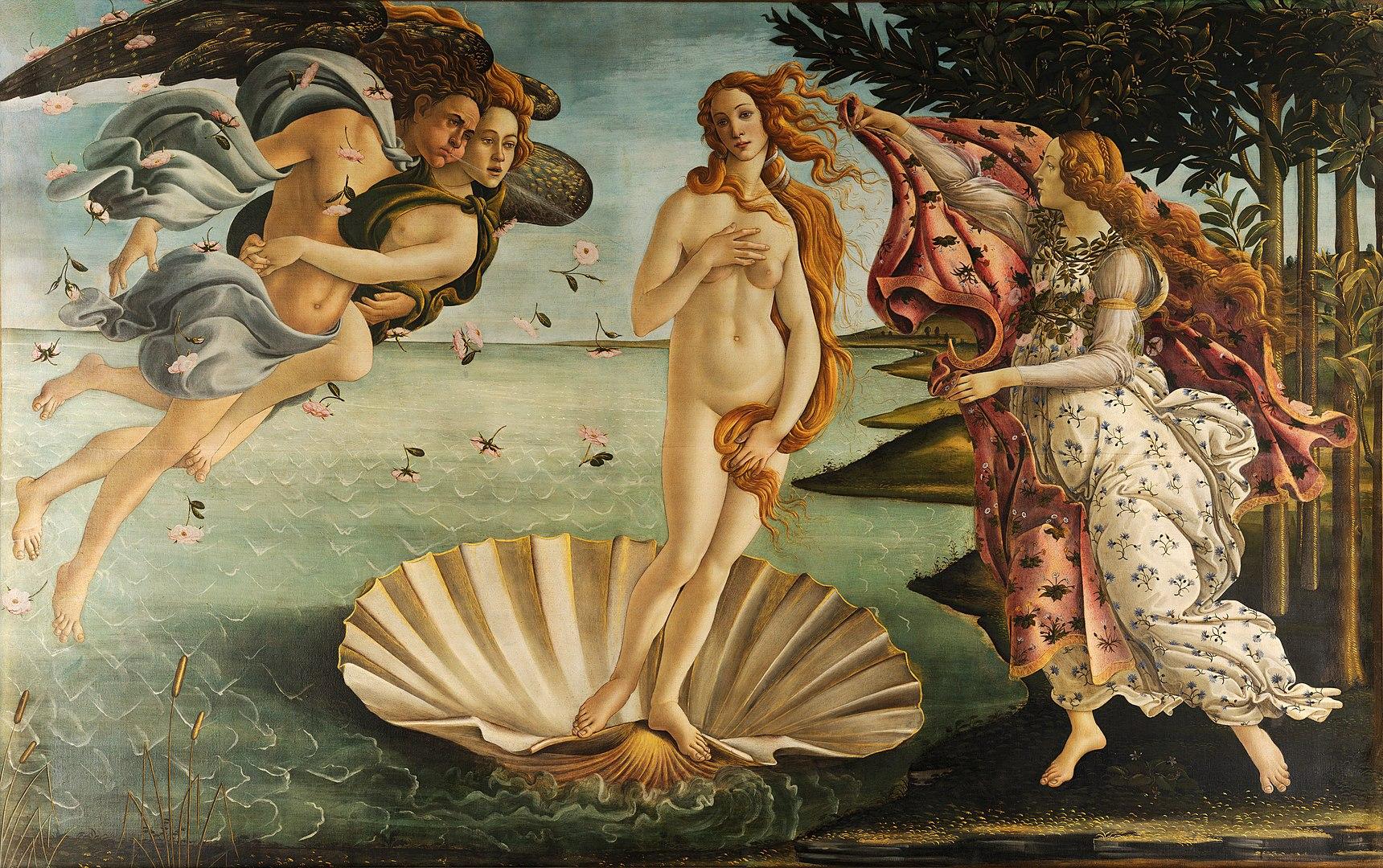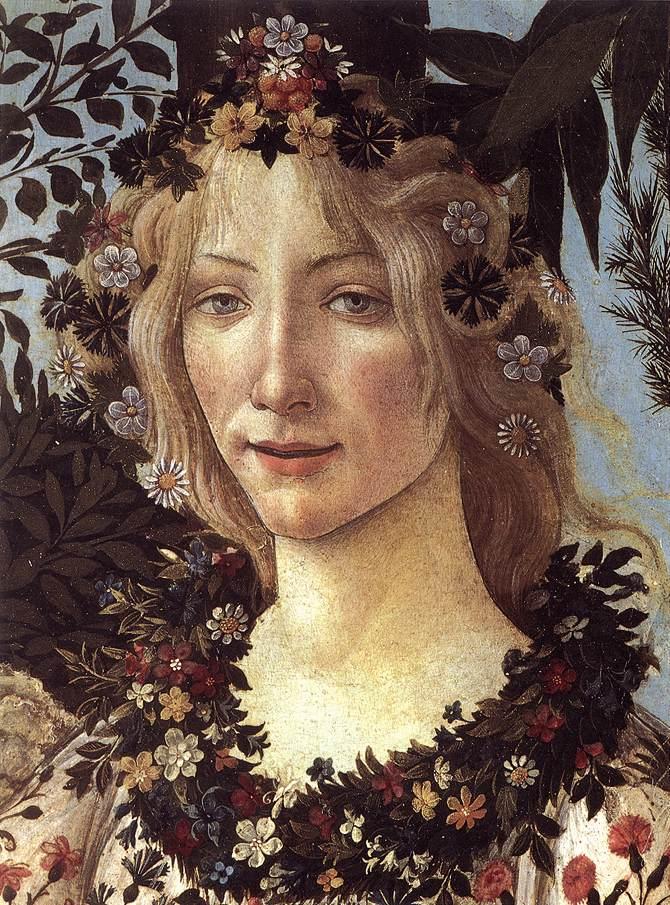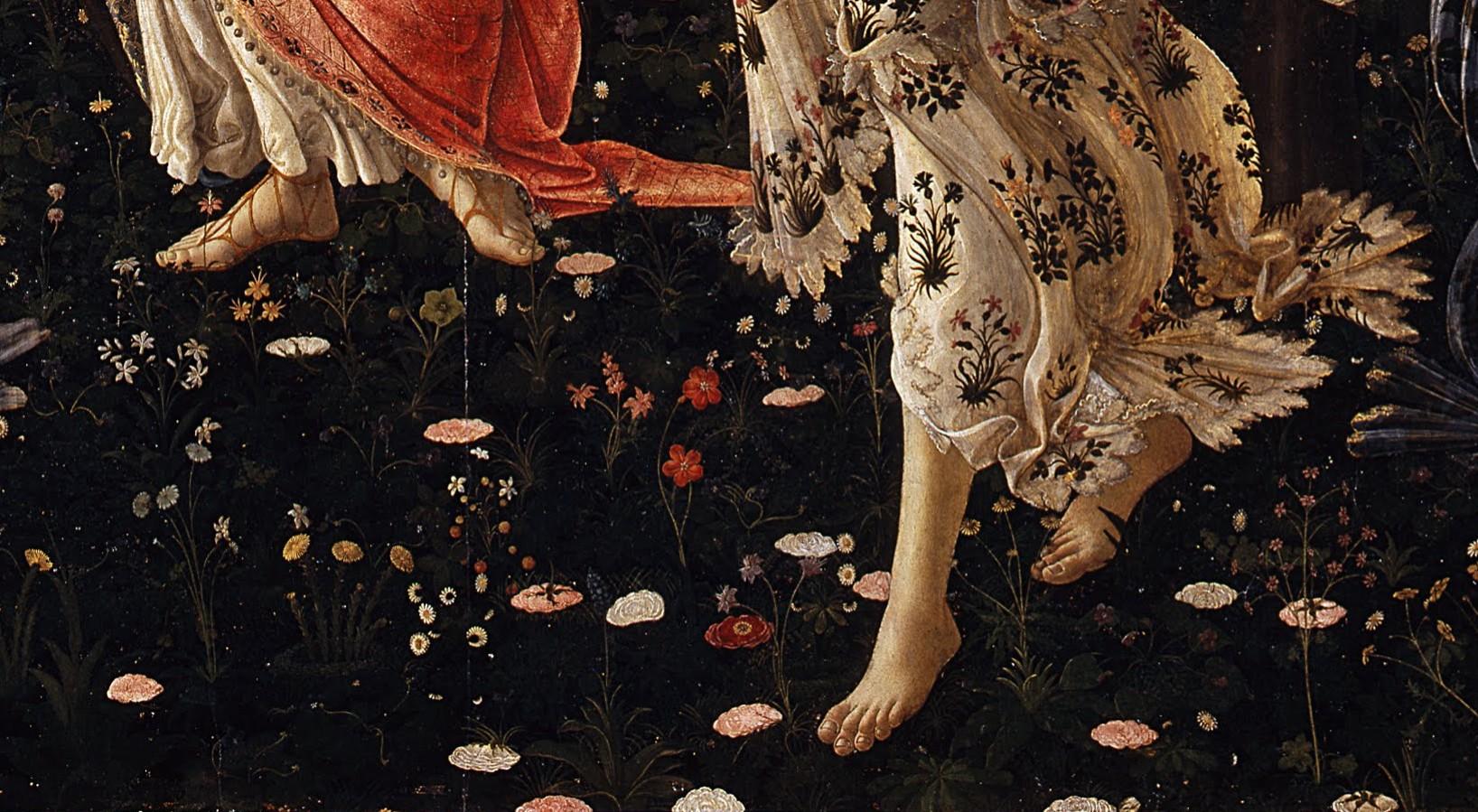1. The characters in the painting were only identified in the late 19th century
While Botticelli was fairly popular and revered during his lifetime, he fell out of favor in the following century. With the exception of sporadic mention in art history texts from the sixteenth and seventeenth centuries, he was mostly forgotten up until the second half of the nineteenth century. Giorgio Vasari, in his biography of Botticelli, whom he looked down on, recalls a painting hanging at the Villa Castello matching Allegory of Spring, and described it together with the Birth of Venus. It was only exposed to the public at the Galleries of the Academy in 1853, and was moved to the Uffizi Gallery in 1919.
After the public could finally appraise the painting firsthand, came the attempts to identify the characters. Adolf Gaspary, who was a philologist well-versed in Renaissance literature and not an art critic, first saw a link between Botticelli’s Allegory of Spring and a poem by Agnolo Poliziano titled “Rusticus,” which celebrated country life and the renewal of seasons.




